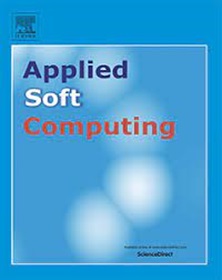Fusing multi-granular-ball fuzzy information to detect outliers
IF 7.2
1区 计算机科学
Q1 COMPUTER SCIENCE, ARTIFICIAL INTELLIGENCE
引用次数: 0
Abstract
Outlier detection plays a critical role in data mining and machine learning, and its application value is widely recognized in several industries. However, despite the growing importance of outlier detection, many current outlier detection methods still rely on a single and fine-granularity processing paradigm. Not only does this paradigm lead to inefficient methods, but it also makes the methods vulnerable to noisy data. Furthermore, this processing paradigm ignores the potential multi-granularity information in the data, which may lead to an incomplete understanding of the intrinsic relations and patterns of the data. To further improve the performance of outlier detection, multi-granular-ball fuzzy information granules-based unsupervised outlier detection method (MGBOD) is proposed in this work. In our method, granular-balls with different granularity are first generated and the fuzzy binary relations between the granular-balls with respect to different attributes are computed. Subsequently, two attribute sequences are constructed based on the importance of the attributes. Then, multi-granular-ball fuzzy binary granular structures are constructed based on these two sequences. Finally, the outlier score of the granular-ball is defined by fusing these granules in the granular structures and mapped to the samples in the granular-ball. Experimental results show that, compared with recently proposed methods, our method demonstrates excellent outlier detection performance under a variety of public datasets. The code is publicly available at https://github.com/Mxeron/MGBOD.
融合多粒球模糊信息检测异常值
异常点检测在数据挖掘和机器学习中起着至关重要的作用,其应用价值在多个行业得到广泛认可。然而,尽管离群值检测越来越重要,但目前许多离群值检测方法仍然依赖于单一和细粒度的处理范式。这种范式不仅导致方法效率低下,而且还使方法容易受到噪声数据的影响。此外,这种处理范式忽略了数据中潜在的多粒度信息,这可能导致对数据内在关系和模式的不完整理解。为了进一步提高离群点检测的性能,本文提出了基于多颗粒球模糊信息颗粒的无监督离群点检测方法(MGBOD)。该方法首先生成不同粒度的颗粒球,并计算不同属性下颗粒球之间的模糊二值关系。然后,根据属性的重要性构造两个属性序列。然后,基于这两个序列构造了多粒球模糊二元颗粒结构。最后,通过融合颗粒结构中的颗粒来定义颗粒球的离群值,并将其映射到颗粒球中的样本中。实验结果表明,与最近提出的方法相比,我们的方法在各种公共数据集下都具有出色的离群点检测性能。该代码可在https://github.com/Mxeron/MGBOD上公开获得。
本文章由计算机程序翻译,如有差异,请以英文原文为准。
求助全文
约1分钟内获得全文
求助全文
来源期刊

Applied Soft Computing
工程技术-计算机:跨学科应用
CiteScore
15.80
自引率
6.90%
发文量
874
审稿时长
10.9 months
期刊介绍:
Applied Soft Computing is an international journal promoting an integrated view of soft computing to solve real life problems.The focus is to publish the highest quality research in application and convergence of the areas of Fuzzy Logic, Neural Networks, Evolutionary Computing, Rough Sets and other similar techniques to address real world complexities.
Applied Soft Computing is a rolling publication: articles are published as soon as the editor-in-chief has accepted them. Therefore, the web site will continuously be updated with new articles and the publication time will be short.
 求助内容:
求助内容: 应助结果提醒方式:
应助结果提醒方式:


